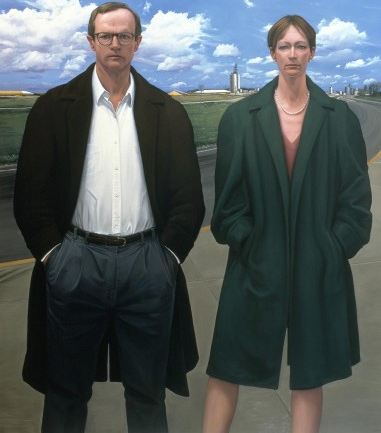
William Beckman
Nothing arouses the almost religious indignation of the U.S. populace (the educated liberal class anyway, and that means mostly white) than to criticize their favorite TV shows.
Vince Gilligan’s AMC series Breaking Bad has, as we close in on the final two episodes, reached clear cult status now. I’ve seen it compared to Dostoyevsky and Kafka.
What accounts for the show’s over-valuation? I think the clearest answer, the most simple, is that it flatters the intended audience.
Network Demographics has it this way:
AMC targets viewers 18-49, viewers 25-54, males 18-49 and males 25-54, according to its 2007 Cabletelevision Advertising Bureau profile. For full-year 2007 the network averaged 201,000 primetime viewers 18-49, a 2 percent boost versus 197,000 in 2006, as well as 246,000 viewers 25-54, up 6 percent from 233,000 in 2006.
AMC also averaged 119,000 male viewers 18-49 in primetime last year, up 5 percent from 113,000 in 2006, and 148,000 males 25-54, a 9 percent increase from 136,000 a year earlier.
The network says “Breaking” targets mainly the 25-54 demographic.
Breaking Bad followed up after AMC’s breakout show Mad Men. The interesting thing here is that the increasingly meaningless Neilsen ratings (still adhered to by sponsers) never had the Gilligan show in the top ten and it never topped 3 million viewers. Now clearly, this is a wildly lowball estimate.
But, it was a cult show, and it attracted a very media savy and educated (and rabidly loyal) following. As Dustin Rowles points out…
The fact that advertisers rely SO heavily on Nielsens is absurd. To actually believe that only 2.3 or 2.9 million people watch Breaking Bad in the first place is dumb. Hell, there are probably 2.9 million people commenting on episode recaps of Breaking Bad around the web. Why do all glossy print magazines devote so much copy to shows that only get 3 million viewers, like Breaking Bad and Mad Men, instead of giving every cover to the cast of NCIS?
There’s a serious disconnect between Nielsen ratings and reality.
Here’s an interesting juxtaposition that demonstrates the point. Over on IMDb, Breaking Bad has a 9.4 user rating. NCIS has a 7.8 user rating. American Idol has a 4.4 user rating. But let’s put aside the ratings, and focus on the number of users that voted. Breaking Bad has had 100,000 users vote in four years. NCIS, the top rated scripted program in America, has had 20,000 people vote in eight years. American Idol, the highest rated show for the last decade, has had only 12,000 user votes. What does that say?
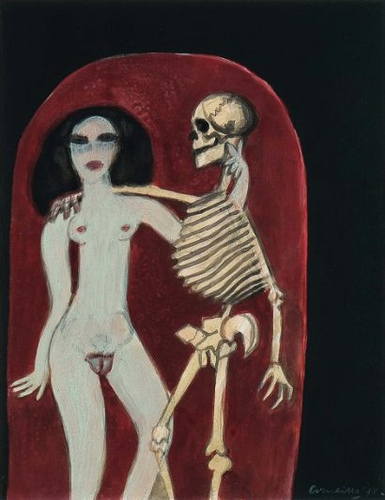
Guillaume Cornelis Van Beverloo
Now, as it turned out, Breaking Bad, on its return, did officially top 6 million viewers. That however is not really the point. What is it that has attracted such devotion and enthusiasm in the viewership of this show? I think, as I said, it flatters its intended demographic, but that is wildly simplistic. The show is really, in the end, another colonial narrative, but slightly inverted. It is the reclaiming of the jungle left to mismanagement under the independent natives. The white chemistry teacher, nerd, and emasculated nerd at that, can go forth into the dark sinister frontiers of the underclass and come out the King. Most specifically, the latino immigrant underclass. The opening episode of this franchise, as Duncan Law rather brilliantly pointed out, is all about pants.
“Pants are an ongoing theme in episode one. They represent manhood and masculinity, obviously. The show starts with its protagonist without trousers – trousers run over by a vehicle, in fact. The emasculated, castrated protagonist will regain his trousers and virile manhood in the course of the episode.
Then we have a scene to establish that the episode will be going someplace exciting and action-packed, with dead bodies and guns, even though it starts slow. Protagonist (Walter White, hereafter WW) gives a speech to hand-held camera, without trousers, about how much he loves his family. Teary confessive love of family != trousers. Then he gets a gun out.”
Walter White, high school chemistry teacher, is diagnosed with cancer. The audience knows White is weak and emasculated because when we meet him, he *isnt* wearing any pants. He is cooking up meth in a trailer in the desert. And has no pants. This is crucial in a sense for establishing one of the central dynamics in this narrative, that of Walter and his wife Skylar. Its not an accident that fans have come out in such force to express hatred of the character of Skylar (to such a degree that actress Anna Gunn actually wrote a NYTimes piece on her confusion…and the fact the NYTimes saw fit to print this also says a lot, but more on that later). Skylar is the castrating female. Her sister is the neurotic less efficient castrating female. Her sister is married to an DEA agent. So right away we learn that Walter, the intellectual scientist is TOTALLY castrated, weak, and without potency, but the DEA agent is too strong, however much the show makes fun of his bluster, he remains potent, and so drives HIS castrating female into neurosis (and kleptomania).
Duncan Law again…..“The next 15 minutes or so of the show are devoted to establishing our protagonist (WW) as an emasculated hopeless victim of his family and work. Various scenes:
WW walking in one place, not moving forward, on an exercise machine. It’s a metaphor for his life!!! He is going through the motions but in stasis, not getting anywhere!!
We learn from a Nobel-citation plaque on the wall that WW was at one time a significant intellectual figure. No more, alas, he is caged in and hopeless!!
It is WW’s 50th birthday (past his prime!). His wife serves him vege-bacon for breakfast. He doesn’t get real meat in this life, just a poor substitute, because he is a hen-pecked and nagged husband, subservient to a restricting, scolding wife. WW’s teenage son has cerebral palsy, we learn here – another restricting misfortune.”
The series narrative is really a remade version of The Man Who Would Be King, the Rudyard Kipling story later made into a film by John Huston. The Kipling story was loosely based on the story of James Brooke, an English colonial explorer who fashioned himself into the White Rajah of Sarawak, in Borneo. What is interesting here, of course, is that this represents the reclaiming of the colonial narrative. What Walter actually achieves is to win back the colonial narrative for post colonial times. One could see the Giancarlo Esposito character as a sort of reimagined Nkrumrah figure almost. But evil, which is actually of course is exactly how all third world independence leaders were seen by the U.S. government. Esposito’s character, Gus Fring, is however, a figure that contains several meanings, and performs several roles for the narrative. He is the dark skinned other, the scary menacing emotionless evil mastermind….though one who serves white people their fried chicken. (Dont trust those smiling brown faces when they serve you!!!). Gus is smart, but smart the way the sinister natives are always smart. He is sadistic and without feeling. He is calculating, but he cant calculate with the white man, so that even a wimpy high school chemistry teacher can out think him.
It is worth noting that the backstory for Gus Fring indicates he studied chemistry in Chile, but was forced to leave under Pinochet’s dictatorship. He immigrated to Mexico, and finally the U.S. So the fascists drove his chemistry student out (not as good at chemistry as Walt, though) only to become a sort of fascist himself. The immigrant clears away fried chicken plates, smiles and tap dances for the Man, and all the while is biting the hand that allowed him into the country.
There is also the matter of Fring’s Germanic name, and the odd C-story of German industrialisits. So the subtle Nazis in South America sub text is at least hinted at.
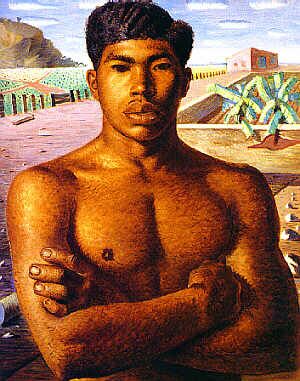
Candido Portinari
The entire thrust of the narrative is the emergence of Walter’s latent masculinity. And his masculinity and potency further emerge as his exploration of the darkside of the underclass deepens. The further into this sinister world Walter goes, the more in touch he becomes with his own sense of power and virility. The narrative collaborates with the viewer in secretly cheering Walter on. NOBODY is not rooting for Walt as he comes up against various psychotic drug kingpins and junkies. Walter represents the civilized world, a world (so the show indicates) that has to, from time to time, return to the use of savage force. The natives respect nothing else.
Walter’s wife is there to limit and prohibit this emergent masculinity. If Skylar would just get the fuck out of the way, Walter could even conquer his cancer. And its interesting to note the cancer goes into remission about the time Walter kills his first brown faced dope peddler, and first underlcass scum junkie. Murder equates with beating cancer. Even cancer is afraid of the new Walt….who by now uses his nom de plume, *Heisenberg*. (we could, if we wanted, do a short critique of that name…but Id feel like Im piling on….).
The point is, this is the theme, the white man, even the whimpiest of them, can, when motivated, become better at what the natives do naturally, which is crime and drugs. Walter is the King of Karfiristan. He is reclaiming the motive force of Manifest Destiny. Now, there are several useful footnotes to all this. The first is that the mad powerful figure of destruction has existed in American literature since colonial times. From Capt Ahab to Judge Holden, the man doomed to destruction, is also often the one who holds the secret knowledge of power. Walter White is not exactly that figure, for he is not deep enough (and Vince Gilligan is not deep enough). Walter can share no secret knowledge with Jesse. The acolyte is simply destroyed. It is this failure of narrative balance that also creates, by season five, a sense of pointless repetition in story. The lip service paid to the fact that Walt has overreached, he has become, like the King of Karfirstan, drunk with his potency and power, are doomed. Jesse is the Ishmael figure in a sense, but again, he has learned nothing. There is a bourgeois frame for this show. The contempt shown the poor and dark skinned is consistent. The normative setting is tract home, two car garage, and white hierachical privilege. In the end, the figure of Hank, the slightly comical DEA agent, reclaims his potency through his pursuit of Walt. A pursuit that takes him through this new post colonial dark continent of the mind. Take back the streets!
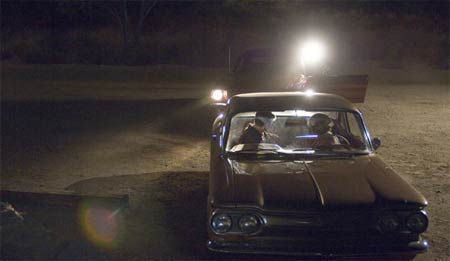
Zodiac, Dr. David Fincher, 2007
A brief note on the production of the show. I’ve suspected from the start that one of the secondary causes for this success of this show has to do with how well shot it is. And that its filmed on location. There is no question that Michael Slovis created a distinct personality and look for the show. And the landscape of New Mexico was also somewhat unfamiliar. The importance of that sense of place (note how badly the U.S. version of The Bridge looks because of LA doubling for El Paso so much) is vital to sustaining the character of the show.
Ok, one doesnt need to belabor this further really. For there is a strange set of tropes being revealed in the current resurgence of cult-prestige programming (Weeds, The Sopranos, Mad Men, Game of Thrones, Sex and the City, Boardwalk Empire, etc). There are, in almost all of these, and other cult hits, a sort of constant interrogation of masculinity. It is the white educated (half) class and it’s demons, which have to do with virility and gender as much as race. I suppose it can’t be a surprise that a show based on Masters & Johnson’s studies is airing now. The questioning of masculinity though, is itself highly neurotic. The safety of period drama allows for a certain license in presentation, and lessening of the double neurotic tendencies in play, but if the narrative is set in some imagined present day, the backdrop is almost always the police and and the validating of violence. Crime cannot exist in the western imagination today without recourse to the police. The police as an institution is never questioned. Individual cops might be corrupt, even whole departments corrupt, and the war on drugs can be portrayed as pointless and contradictory and even hypocritical, but in the end, the message is always the same. We need cops, they are the thin blue line, etc, etc, ad nauseum. Narratives of violence are always, always, always included within the framework of institutional integrity. Now, it is less visible in some shows, but it’s always there. But let me return to this idea of white male potency and violence.
Violence is very often in place as a force of purgation. Violence is less destructive than it is cleansing. Increasingly, there is a disturbing trend in popular cultural product that displays violence without any repurcussion. The depiction may itself be hyper graphic, and sadistic, but the repurcussions are almost non-existant. The disposibility of human life is a constant drum beat. In Breaking Bad, violence is the graph or barometer for Walt’s sense of agency and male dominance. And again, the story line is to demonstrate white superiority over the dark skinned usurpers of this frontier region. It is a frontier space that is psychological and ideological as much, or more, than territorial. For they live among us, wiping off our tables and freshening up our iced teas. The theme of purity, in fact, looms large in this show. Walt, in the guise of Heisenberg, makes BETTER crystal meth than his competition. His meth is PURE. The topic of impurity resurfaces again and again. Heisenberg’s blue crystal is distinct, you can SEE it, and it’s better.

Tarsila do Amaral
It is made by white hands. The evil Chilean chemist must hire Walt to make his evil product. Now, at the end of season four, Walt’s final line is “I won”. Ah yes, white victory. The metaphor is almost OAS nations kneeling in submission to North American power. Now, also, as one finds in Jenji Kohan’s shows, or those of Milch and a number of other big franchise creators, there are the liberal side bar apologetics or auto-critiques. Gilligan must poke fun at Hank and his buffoonish behavior, and his failure to speak Spanish almost costs him his life when he is re-assigned. You must learn the native tongue to survive. Not because of anything other than the need to decipher threats. And like almost all film and TV produced in the U.S., the depiction of Mexico is exoticized as a land of shadows and death. It is a place of tacit inequality and filth. The hospital that Gus Fring set up in Mexico is there because actual Mexican hospitals can’t be trusted. The land south of the border is a land of nightmares. It is pagan (Karfiristan). It is profligate and dissipated.
Here is Garland Grey on this topic:
“There is a problem with the way Breaking Bad portrays the aspirations of my race, people who look like me, and how those aspirations justify the deaths of people of color. There is a moment in the fourth season where Gustavo Fring orders Jesse to go do some bit of grunt work to leave Walt to clean up the mess from the cook alone, and Walt recruits three ladies from Lavandería Brillante to finish the job in the underground meth lab. This is the space Gustavo slit a man’s throat in, that he has been clear about being willing to murder people over. These women are not killed (which was a distinct and clear possibility) but they are deported back to Honduras. Their entire lives upended so that Walt could sit on his ass, shake a cup of coffee at a camera, and get one over on his boss. He had every reason to think he’d be dumping those women into barrels of acid, and he did it anyway.
There’s a mythology that undergirds this country’s understanding of race and seeks to explain why white people succeed at the things they do…and the name of that mythology is white supremacy. What I see in Breaking Bad is a story that is partially about how easily white people can dominate and outmaneuver people of color.”
One other note on the performative aspect of this show. Giancarlo Esposito, by virtue of his brilliance as an actor, sort of disturbs the balance of the narrative. Bryan Cranston, a ham-fisted and graceless actor, or over-actor, indicates his way along in stark juxtoposition to the economy and precision of Esposito. It’s a curious dynamic. And, as is the case with most successful shows, as the series gains popularity the actors start acting more. Find me an exception to this. You won’t be able to. There are narrative cul de sacs at work, too, in the final season. The biggest is what to do with the castrating wife. Skylar cant exactly embrace the immorality of her husband, and yet in a sense she does. The sort of sentimentalized melodramatic response of Walt Jr and of Skylar both, to the reality around them, feels oddly pasted on as something required. Its the spinach you have to eat so you can then enjoy the chocolate cake of Walt’s evil virility.
Now, here is now the New Yorker TV critic sees the show:
Again, the default (and unspoken) setting is white as normal. The system is in place and the villains and stories unfold within a clearly defined set of cultural markers that delimit a world of white male governance. And this is the heart of the problem, actually. To read critics on television, one would believe that shows such as Orange is the New Black, or Top of the Lake, or Girls are not somehow part of this same system. I am certain you cannot find a single institutional critic suggesting that these shows are not also, in differing ways, part of the same ideological framework.
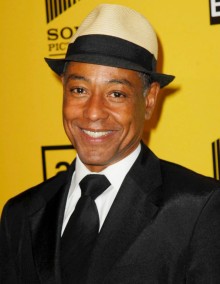
Giancarlo Esposito
On one level, it’s certainly wrong to criticize anyone’s enjoyment of this junk. I enjoy a fair amount of it. And part of that enjoyment is linked to the expanded narrative format. Such is the longing in all of us, I believe, for narrative, for long form storytelling of any sort, that some level of engagement allows the exercise of mimetic faculties usually battered into states of atrophy by the constant assault of advertising and sit coms and social media. The truncated state of discourse suffers from an embrace of the twitter model of almost hostile two sentence declarations. Twitter is just a punch in the face sort of experience. There is no real dialogue. There are only declarations. Statements of belief. There is a quality of intellectual bullying that accompanies this.
Now, a show such as Top of the Lake, deserves at least a brief comment. And it deserves this because it so utterly failed its rather extraordinary promise. Jane Campion’s New Zealand filmed crime story, starring Elizabeth Moss, was in its first half season a compelling examination of masculine sickness. What was so disappointing by the end was that apparently Campion had no idea WHAT the show was about. One could not but feel the sense of condescension to the form itself. And this is worth looking at. I’ve said before that all stories are in a sense crime stories. Part of all narrative relfects out own mental development and formation. Our own manufactured identity, and sense of place in the system. Genre structures are there, at least so I believe, to reveal the mysteries of everything. The point of great genre writing is not to solve the mystery, but to introduce the idea of mystery to life itself.
What happened in the Campion show was an increasingly sentimental and superficial “message” being foregrounded. The story just sort of died on the vine. There was no more urgency to the mysteries of this created world. Now, again, its not the solving, its the idea of mystery itself. It is what that mystery says about each of us. David Fincher’s 2007 film, Zodiac is an interesting case in point. A film about a series of real life murders that were never solved, became a film about the desire to solve things and the ways in which madness can follow. That the film did not do great box office is therefore not surprising. Campion could have delved into the darker reaches of sickness instead of just preach to us. The recourse to the sentimental of course is embedded in anything corporate networks and studios produce. The UK’s much applauded mini series Top Boy is another example. The story of youthful criminals and the underclass neighborhoods of London, were an intriguing locale, and a subject worth presenting, and certainly it was welcome to see an almost entirely black cast. However, its still a white show, and therefore the sentimentality of liberal paternalism eventually takes over the narrative. Written by Ronan Bennett, whose own story is itself a good deal more interesting than his work, the series cannot help itself from crass sentimentality and stigmatizing of the underclass. In a sense, this is much like David Simon’s The Wire in the U.S. Now, I admire a good deal of what The Wire did, and certainly found the show compelling on several levels. However, in both these cases, you have white men making shows about the black underclass and doing so against a backdrop of crime. The Bennett series however, cannot even sustain it’s genre demands. One cannot escape the sense of white virtue being paraded, and perhaps in one way this is just simply unavoidable. Here is Bennett on the inspiration for the show…
The white observer, the white tourist. The series becomes a story about white virtue in deciding to tell this “other” story. It is appropriating the stories of the other, and therefore, just another colonial narrative.
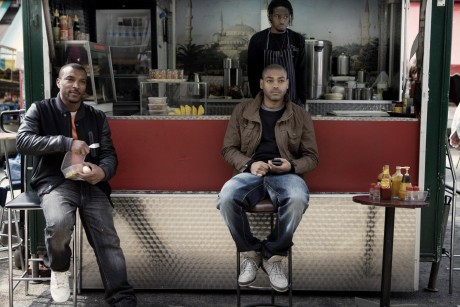
Top Boy, 2011, Channel 4
There is also the discussion of violence here. If one were to look at corporate TV and film product over the last decade, it would be contain almost impossible to imagine levels of violence. And who is perpetuating this violence? Not the state. And if its the police, it is seen in the context of a war on crime (even if that is made clear as a failure) but usually it is the violence of the underclass. No amount of sentimentalized concern for poor mums and no display of overt compassion on the part of the filmmaker, can change that fact. What is being reinforced is that the underclass are a problem, and a violent problem.
Malcolm Harris on meth and Walter White…
http://thenewinquiry.com/essays/the-white-market/
The horrors of Falluja dont seem to make it into primetime narrative, nor do the executions of thousands by police and white vigilantes after Katrina, in New Orleans. The countless shootings and fatal beatings of young black men by domestic police departments are not the standard plot elements in netwoork TV. The legacy of birth defects from depleted uranium is not part of the violence. Now, rare exceptions do occur, but their rarity only proves my point.
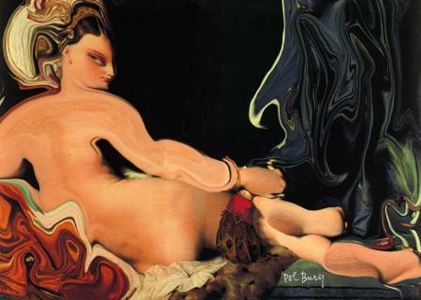
Pol Bury
What one learns of the underclass on network and cable TV is that it is dangerous, untrustworthy, and a pollutant. The story of Gustavo Fring, Chilean national, immigrant, chemistry student, is left to be told in thumbnail asides, brief snapshots of a vague South American world where dictators rule (by nature) and where ungrateful unfeeling criminals come north. The violence against immigrants is invisible. We learn Gus’s partner was murdered. Details are not really important. Its a sketch to fill in the backstory. The Jewish lawyer, Saul…Just call Saul….(soon to be a spin off show) is just another cartoon. We know nothing about him, except he employs a freakishly large and strange looking black man to help him. No, the real agony and narrative detail belong to the white center of the show. Now, I expect fans of this show to object to such a critique as this. Brand loyalty being what it is these days. And I think its instructive to look at that, because again, this is very well photographed show, and one that utilizes both music and location to supurb effect. The problem is, its a show about white supremacy. And it is impossible to deny this. THAT is what is on the screen. The white center, and the dark skinned poor are dematerialized throughout. The vast “south” of this show is one suggestive of pre-modern thinking and values. What would this narrative look like if produced by a Chilean, and written by a Chilean, or Brazilian or Argentine? The workers at Gus’ cleaning plant are invisible, are props for the white protagonists. They have no story.
“…representations are ideological tools that can serve to reinforce systems of inequality and subordination and sustain colonialist or neocolonialist projects. A great amount of effort is needed to dislodge dominant modes of representation and subvert and challenge hegemonic ideologies. Self-representation may not be a complete possibility, yet is still an important goal.”
Anne Marie Baldonado
As Edward Said pointed out the depiction of the third world (the orient) is usually one of mass misery, of collective irrational movement and rage. The stories are submerged within a master narrative that indicates fear is the logical response of the white European. Fear of these irrational forces without stories. So, what one gets is either the condesencion of Ronnan Bennett, or the sterotyping of Vince Gilligan. The stories are appropriated one way or another.
“Parody is where mimicry exposes construction, suggestive of a new sort of anthropology, post-post-Frazerian, that defines its object of study not as Other but as the reflection of the West in the mimetic magic of its Others.’”
Michael Taussig
This quote of Taussig is important, and I think also often misread. For this is the problem of master narratives. And it touches on the problem of post colonial subjects who create within a vocabulary not their own. This is only indirectly related to this posting, but it’s worth mentioning. The new colonial narrative surfacing in studio film and network TV is one in which there is the creation of a new colonial ‘place’. It is not a real place. Gus did not come from a real Chile. He is not Chilean. He is a cartoon bad-guy. There is posited, though, within the creation of this cartoon, a world that only exists in the imagination of the privileged West. And it therefore reflects back an image of parody and a mis-reading of the former colonial subjects reaction to that ‘first encounter’. This is a topic for further discussion, because it is a big topic.
The representation of the underclass is also a part of this cartoon. The violence in TV and Hollywood film is now seen in daily life, but it is largely the violence of the state. News coverage of the Navy Yard shooter is feverish, and hysterical. The coverage of birth defects in Iraq is invisible. The coverage of another black teenager beaten or shot to death by local cops is muted if not invisible. The Navy Yard shooter, however, is a plot perfect for televsion. It resembles a movie. It’s an episode of Homeland. There are calls for gun control, calls for better security, for more vetting, and no doubt for more surveillance.
After all, the underclass is crazy on drugs, they cant control themselves, they are not smart enough to make pure blue meth.
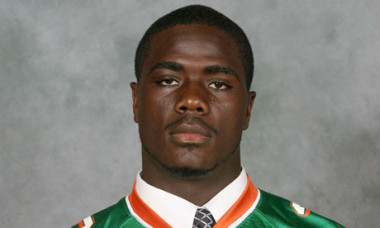
Jonathan Ferrell
A Charlotte police officer shot Ferrell ten times. Ferrell was unarmed.
State violence is widespread. It is increasingly being normalized. Poverty is on the rise. Here is the latest census info on New Mexico, home of the Walter White family. http://www.abqjournal.com/265639/abqnewsseeker/census-n-m-poverty-rate-increased-from-2000-to-2012.html
One does not see THIS poverty in Breaking Bad. One only sees tweekers, junkies, whores, and couch-lock pot heads. One sees a few Honduran immigrants. If one sees divine suffering, it is divine white suffering. There is a scene in the third season where Jesse has invited a bunch of homeless people and addicts to his house for a party. At one point he throws a wad of bills into the center of the room and sits back watching the great unwashed scramble and fight each other for each dollar. What is the message of that scene?
It is the message of the entire show, actually.
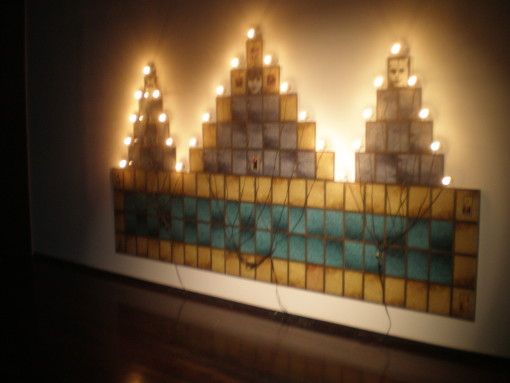
Christian Boltanski

The dominant model of the emasculated white male which you so aptly elaborated here has been knocking around in comedies and black comedies since the 50s. But the complex of law enforcement/ permanent underclass v. privilege/white male emasculation v. boy power has a uniquely contemporary twist which seems to drive the new bad (which doesnt seem to have the gravitas of evil but maybe i am prejudiced)
Sameness seems like the new hegemony, part of the enforced “relatability” codes that rule character development in narrative entertainments. And the underlying sameness dictates the polarity of good/evil…
As long as characters are not deviant from a norm, they are allowed to exist. (Same goes for people.) Sameness, familiarity, normalcy=relatability…thus your new yorker reviewer speaking under his aegis as New Yorker Reviewer blinks not at the deeply embedded racism of BB, because he is the same as the show runners, of their tribe. Literate watchers are of the tribe. There is a subtle messaging that is passing between the authors and the audience which bypasses the drama i think. Sins of the tribe are titillating, touring the dark exotic home of evil is a cool trip. Shows aimed at younger audiences use the characters as “relatables”, shows for older folk are communications between the authors and execs of the show characters and the aspirational audiences of their demographics.
The manicheaism at the heart of shows like BB is popular because it is driven by the anxieties of its audience. Fear of the loss of pants(!)…on to the triumph —that fantasy of [white]conquest, which necessarily involves a complete abandonment of human compassion (alas compassion has become too complex and strange for all but the grannies and grandpas among us.) It is a fabulous blind Dionysian sadism that liberates us from the constraints of a Puritan ethic all the while enfolding us back in as a miltonian satan falls down to his allwhite hell and presides over darkies.
ps.A show like Treme fails to gain traction because it is too realistically desultory, too focused on real problems. More successful The Wire (which okay was MUCH better written) had real bad guys and beleaguered good guys.
The Wire is even more racist:
Much to say but I have to object to the ideaq of the Wire having “real bad guys” – they are figments of white racist fables: the show follows very precisely the Dixie ,oral formula of good deferential black people who know their place and are loyal servants of white establishment, and bad black people who are uppity; every single black man in authority is depraved; the shows tragic black figures are Omar and Bodie who are fundamentlly good and loyal but who are tempted to uppitiness and must be put down like mad dogs with bullets to the head.
Omar, the shows most popular character is murdered by a 13 year old black child.
Nothing like this crime has ever occurred in the history of the united states. If it seems real to you this is the effect of the Nazi propaganda that the show is – embedding this scene in the right cigarettes and set dressing makes it seem plausible. And so Trayvon Martin and Kimani Grey pay the price of white people’s readiness to believe this is “real”.
more in a sec
@rita………..i think the ‘relatability’ idea is exactly correct. And I remember this from working as a staff writer. These strategies sort of change over time in terms of how they are applied, but the essential mandate remains the same. The producers and show runners used to use the term “root”. Who can you root for. Now, this can change even within a single episode, and I think that occurs more often these days when these rooting interests are more fluid. And this is because there the essential formula is more established. Now, i know the whole question of college rape and military rape (there is now a trial of midshipmen at annapolis going on I believe) is connected certainly to the idea of white masculine dominance. And all these shows, just about every one, is predicated on a normative white world, a world of white men, in fact. There seems to have occured a threshold around the time of The Sopranos….which ushered in HBO as a cultural force and it was followed by Showtime and AMC, et al. And this new generation of material employed irony as a mediating narrative factor, or really as a frame. All of these shows are ironic. Often the irony is distanced though, and this is why realism, the idea of realistic, is so pernicious. The Sopranos was openly ironic. It began as a quite different sort of show in fact. It was a comedy, really. But people approached it seriously and the show adjusted to this response. But then all the stuff that followed….from Mad Men to Six Feet Under, to Deadwood, to Breaking Bad, the cult status shows, followed this framing. I havent quite figured out just how period formats affect this stuff, the way in which realism is employed as history. And then this faux history is sort of re-employed as realism. Or in sci fi, in a show like Falling Skies, or the Walkling Dead, with the zombie motiff embedded. So on the one hand Walking Dead utilizes a realistic canvas to tell a story that is patently not realistic. Or True Blood….with vampires replacing zombies. The entire narrative construction is sort of straddling these ideas of realism and irony. The ironic backdrop somehow doesnt interrupt the “realism” of the presentation….so True Blood makes no attempt to be realistic per se, but yet it is. And then a sort of strange wink to the audience takes place, which is part of this relatability thing. And that is another whole topic, in a sense….the inclusion of the audience in the construction of a reality. Its cool, its hip, it is intended, consciously, to be twitter material. Breaking Bad certainly participates in this. It is, in fact, exactly what Nike often does with their campaigns.
@molly……..yeah, I understand your position on The Wire, even if I dont fully agree. But i also dont disagree really. In fact, I mostly agree actually.Top Boys is even more obvious in this sense. But this is the question of realism again. The lurid crime is presented as documentary like storytelling. So the hyper realism of the presentation belies what is really still a fantasy of white producers. Top Boys even more so, much more so in fact. The use of children in Top Boys is employed for both this luridness, and for sentimentalizing. And rita, you’re right about Treme…..the lack of such luridness made the show too unfamiliar. And the fall out from katrina was simply not an appealing topic, because it was basically factual and hence it contradicted the idea of this manufactured reality. The show was dysfunctional in terms of its codes.. I think the racism though is pernicious throughout all these shows. And the delivery system is always the police (or military, or government in some fashion). So its interesting that in fact a show like The Wire, or Top Boys, or even Six Feet Under, which present themselves as sort of social critique (and which are, to some degree critiquing real things) find themsevles subsuming those critiques within this fantasy construction of white virtue. Its just never absent. BB is closer to Sopranos in a sense because the ironic is foregrounded more. The winking at the audience is more disturbing, to me anyway, than the other material because it ASSUMES a familiarity with the racist construction. And this assumption seems to me a more recent phenomenon. The sudden openly racist treatment of material is couched in ‘the ironic’…its billl maher, its so hip, its zizek, its so hip to point out, oh, well racism, thats such a quaint thing to be upset about.
And following one step further…..the misogyny is almost as open as the racism. The more openly hyper masculinist fantasy of Sons of Anarchy, oddly contains the only interesting female characters in TV, quite possibley (at least after Nunn got involved around season three). But in BB and the rest, the white male anxiety is pretty much the central topic. And that anxiety fuels this violence. I think when one reads the comments from any of these rape cases, the vocabulary is highly ironic. Again, its hip, its cool, Im racist, I rape., Boys will be boys. So in BB, skylar is this object of hatred by an audience openly rooting for Walt. Skylar is just such a buzz kill. At at a certain point, once Gus Fring is dead (and his death is worth a whole post by itself), the show is left sort of free floating and without any oppositional themes. The final season is very odd in that respect. And ive yet to see the conclusion, but Im sure it will be revealing. In any event, I think the college rape-is-ironic climate is exactly reflected in and manufactured by these narratives. It is the validating and selling of white dominance, its marketed. And it is markted just the way that old Nike campaign was (which they pulled) where they said “sweat shop made” above a photo of a trainer.
and one other note. And its , again, obvious, but these are all produced by RICH white men. And they are all written by and created by a certain class. Even Ronan Bennett, who in theory is from a different class background, is still writing from the pov of privilege. This cuts across every single one of these shows. Every single one. The underclass,. the poor, are treated as exotic, they are fetishized, and somehow are deficient ….in one way or another, the underlcass, the addicts and drug dealers and just insane or homeless, are presented as if in a zoo. Its no different than those old colonial human zoos of the early 20th century. And Molly, its right that often there are “good” underclass characters…..who strive to be like the Man…..and are applauded for their hard efforts. — Now i think some of the shows exhibit a degree of skill that others lack. Some indeed are less cartoonish, or more clever or more nuanced….but the basic frame is the same., Across the board./
I haven’t seem most of these shows…but I wonder do you think Gus back story is a kind of apology for Pinochet? Like he rid his country of sociopaghs and nazis.. those who complain of him are the enemies of our hero
To be like the man but also to serve. They know their place. Sidekicks…like tonto or the black characters who are staged to validate white men’s cool and authorize appropriation.
the question about Pinochet is interesting. When I first thought about that link, hearing it, I thought it was very odd. And my suspicion is that the entire german sub plot was just abandoned. Remember the start of the season with the german killing himself (and actor who is a friend of mine, actually)….that suggested that this story would be developed. And this was linked to that woman character who is buying now….etc. And yet the germans sort of disappeared. So this may have been a storyline that just got axed. But…..but….its still a very curious bit of backstory. The message, whatever the original intention, seems like….yeah, Pinochet got rid of guys like Gus…..dumped them in the US. There is certainly no suggestion (unless i missed it) that Gus was persecuted by the regime. But i think its just mostly sloppy writing. And yes, to serve. Always to serve. Wipe that table. And yes…..to validate the cool of the Man. Yup.
I, personally, am tired of depressive, boring and humourless white men with guilt complexes analysing the ‘oppression of the Other.’ John your writing here is trite, boring and droll. I suggest you move on, or quit writing altogether.
hard to be boring, trite,, AND ‘droll’……one or the other, no?
John, you raise very interesting points. It’s only been in the last three seasons, now the Breaking Bad is getting too big for its britches, that I’ve come to see the flaws of the show. It’s interesting that you connect Walt White (of course his name is WHITE) with Judge Holden, because White has always felt like the emasculated, watered down, amnesiac, TV version of the Judge. However, deep down in the heart of both men is evil and the ambition for power. I’m not defending the show at all, I just wonder if Gilligan realizes that his intention of showing the descent of the average white man into evil is eclipsed by the stereotypes within which he works. I don’t think he does.
By the way, I do disagree with you one thing: that the show is well-shot. I mean, sure, it looks pretty, but too many of the episodes are so self-conciously directed that it comes off like the thesis project of a film school student. I often hate the opening vignettes designed to mislead viewers or to lure the audience with an insight into the presumed pathos of the show. They are empty, they are non-inspired, and usually gimmicky.
Now, there are some redeeming aspects of Breaking Bad that I find interesting and that in fact I’ve never seen on TV (then again, I don’t really watch TV shows at all). I find it to be an interesting love story between two heterosexual men – White and Pinkman. These are men who kill for each other, who are so repressed as to their sexual feelings for one another that their sexuality manifests in crime, violence, and drugs. They achieve a type of intimacy that gay lovers often strive for but seldom reach. There’s a scene in which a dozing White calls his son “Jesse”, which mirrors a cheating lover calling his wife by his mistress’s name. The fact that Walt Jr., who changes his name to Flynn, has cerebral palsy and is basically and unfit heir, makes White and Pinkman’s pseudo-love affair into something Freudian. At the end of the show, I guarantee that these two will end up in each other’s arms in some kind of perverted, twisted love affair/father-son relationship. And I find that interesting, if not exciting. But again, I wonder if Gilligan recognizes the complexity of this affair.
There is one thing that really does bother me about Breaking Bad, and that is that it reflects our society’s obsession with sentimentalizing cancer. It’s everywhere. If someone despicable suddenly has cancer – watch out, best not to criticize them. Suddenly, people are deemed brave and heroes for surviving cancer. I can’t stand this shit. No, they’re not brave, they’re fukcing human fighting to stay alive. Ugh, I can’t stand it…
One more thing I’ll add, which you touched on briefly above, is Gus Fring’s sexuality. It’s interesting that a homosexual has run a meth empire in the Southwest. He’s black, Latino, AND gay, which seems a bit much, don’t you think, especially considering that the drive for revenge and empire begins once his lover is killed. But still it’s worth seeing how the writers of the show bring it up – but only from a safe distance. That reminds of the episode of The Wire where there’s a brief shot of Commissioner Rawls at a gay bar that’s never brought up again, but it tinted his character with a shade of complexity that it never answered.
One more thing, and it may seem obvious, but I’d like to elaborate… in what ways do you think Breaking Bad flatters its viewers? Because for me, I find it sometimes insulting and other times exasperating. Then again, the episode from last week, where every character who mistreated Walt got exactly what they deserved, seemed to satisfy something in me I can’t quite name. Is this the feeling you’re referring too? BEcause it’s the equivalent of a bad hand job in a dark parking lot by a person of indeterminate gender.
@joe….
First off, I do think the show is well shot….NOT well directed, but just technically well shot. Slovis shoots the desert in a way that gives the show an added sort of depth it doesnt really deserve. But i agree the direction is often quite self conscious (shooting from the pov of an object or an insect or something).
I hadnt considered Fring as gay. Its an intriguing observation. I sort of felt he was just being desexualized….in keeping with a general dehumanizing of the dark skinned villains. But what you say makes sense and its certainly in there in some fashion.
The pinkman and walt dynamic is curious and I think in fact gilligan doesnt quite know what it is, and we are all projecting complexity into something that may not be complex. But…..you’re right that walt jr as the unfit heir, the spawn of white, is replaced by pinkman…..and their relationship has a weird homoerotic dimension, though i wonder…..there is a sado-masochistic aspect that feels sexual….but its so inconsistent. The entire construction of this show is sort of inconsistent.
As for flattering the audience…..i think it does this by the creation of this white supremacist narrative. White people “win”. Mr White….wins! Now….remember the young chemist hired to replace jesse….as i recall anyway….who was sort of sexually indeterminant…..but gets shot in the face by pinkman. Jealousy? The engine of the narrative though is whiteness………this reclaiming of this manufactured zone of danger…meaning a place controlled by dark skinned people. Thats the main theme. And this is what i think I am seeing more clearly now in all corporate product. All of it. The abuse of the poor neighborhoods where kids like Kimani gray are shot dead and where cops threaten witnesses…. a west indian area of Flatbush…..THAT is the reality, the absolute sadism of the police, the domination of the poor. And you never ever see that.
I really believe the show had something good going for it into season 2, before devolving into the same old tropes you speak of and becoming well shit and entertaining junk….I’m not sure what it was though. The scene in the junk yard for example, is a great scene. The side story between Jesse and his new girlfriend really captured recovery culture as well. Of course, taking that to the plane crash culmination I guess proves your points about sloppy writing.
Well……….i think Lex, that the rehab scenes were good…they honestly found a lot of the truth of recovery culture. I know those places. And thats the place were the show was least cartoony. However, im not sure I buy it ever being good. Because it was always this reactionary white man theme. BUT……….my wife, gunnhild, made an observation….and that is essentially the white anxiety comes through even in the midst of this white colonial fantasy. For walt is still at the car wash…as she said, he is still giving change for twenties. He is still sort of semi castrated. Its a weird dynamic…for then he goes all psycho and takes the baby etc. But im not sure that felt very in keeping with the sense of the show. I think there is validity in seeing Walt (white men) never quite finding the Kingdom he dreamed of. Its an odd thought anyway. Karfiristan is still a carwash for walt.
I don’t know. My early reading of the show was that white flight was a part of the slow death. Suburbia (or more contemporary, a gentrified hood) is only made possible by a police blockade etc…and It seemed that that was part of the cancer. For me, it really changed as Hank became more and more valorized. Also, the devolving villains, from the interesting Crazy Eight, to the cartoon Tuco, and on to the malevolent Fring; the “Evil Nkrumah” perfect.
One thing which I don’t think anyone mentions is what I think of as the “system absolving manoeuvre” in the early Breaking Bad episode “Gray Matter”. Walter is invited to a birthday party reunion with his earlier acquaintances who now run a successful business. They offer to employ him and pay for his cancer treatment. Thus he is offered an alternative to the meth cooking crime path. Of course he refuses.
The reason for the refusal is to preserve the tale of Walter’s transformation into the capable action hero, guarantee all the murder and mayhem that follows and also to set up the rich former acquaintances as a plot device later. But I think there is another reason: without the offer of a way out, Walter’s drive towards crime would appear as necessary and thus provide a tale in which poverty is the catalyst. This is a taboo subject in the West and particularly America. The hubris that follows must be seen as a matter of personal corruption, the sin that the protagonist brings on himself.
great take. And absolutely true.